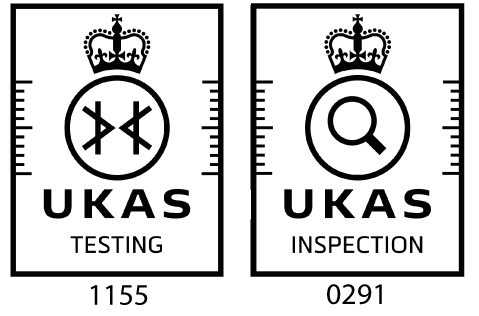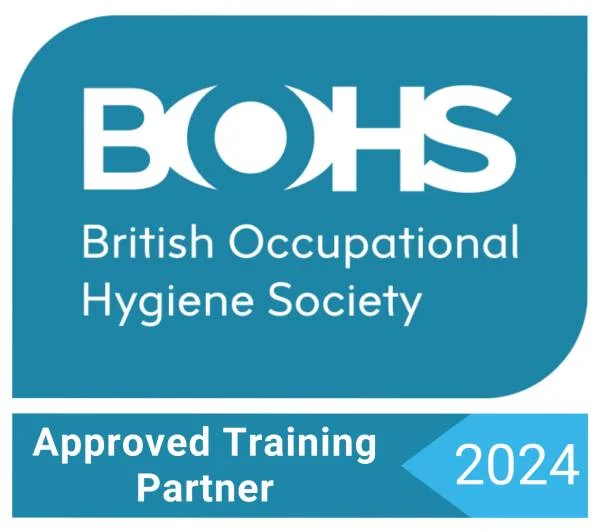What is asbestos?
Asbestos is the common name for a variety of naturally occurring silicate minerals that are fibrous in structure. This mineral occurs in many parts of the world, the main sites of commercial asbestos mining and production are:
- Canada,
- Soviet Union
- Southern Africa
Asbestos containing rock is crushed and milled at the mining site to produce raw asbestos of various grades. There are six types of asbestos which fall into two category’s of fibre type. The two asbestos fibre types are Serpentine (curly, wavy fibres) and Amphibole (needle like fibres).
Of the six types of asbestos the three most commercially utilised are:
- Chrysotile (White – Serpentine)
- Amosite (Brown – Amphibole)
- Crocidolite (Blue – Amphibole)
The other three types of asbestos are amphibole fibre types and are far less common. These are:
- Anthophylite
- Tremolite
- Actinolite
Asbestos strands can be split into smaller and thinner fibres during disturbance. Asbestos mined ore will initially divide into visible strands, fibre bundles, and individual fibres.
This splitting can continue on to minute levels of microscopic size. This process is unique to asbestos and is why airborne asbestos is such a problem. Asbestos fibres can become so small that they remain airborne longer and pass undetected by the respiratory dust defences.
Asbestos would be a great building product were it not for the huge health risks. It has a high resistance to heat and many chemicals and was the building material of choice in the 1960’s to the mid ’70’s in the UK – before the potentially deadly properties of asbestos were known.
Asbestos fibre is mechanically strong and highly resistant to heat and chemical attack. Because of its fibrous nature asbestos fibre can be woven into fabrics and used as reinforcement for cement and plastics.
Asbestos was extensively used as a building material in the UK from the 1950s through to the mid-1980s. It was used for a variety of purposes and was ideal for fireproofing and insulation. Any building built before 2000 (houses, factories, offices, schools, hospitals etc) can contain asbestos.
During this time asbestos was used for a number of jobs such as; floor tiles, pipe lagging, textured paints (Artex), internal partitions, central heating systems, roofs, gutters, rainwater downpipes, cement cladding, fire protection to structural steelwork, fuse boxes, bitumen products and many, many more.
Asbestos materials in good condition are safe unless asbestos fibres become airborne, which happens when materials are damaged.
What does asbestos look like?
Asbestos can be present in any building built or refurbished before 2000. The materials below represent some common places where asbestos can be found. If you are unsure whether asbestos is present, don’t start work. Your supervisor or the building manager should tell you if asbestos is present.
Loose fill asbestos fibre
Sometimes found in fire doors. Also found in paper bags (look like jiffy bags), often between floor joists for sound insulation. It’s raw fibre, any disturbance will send it airborne.
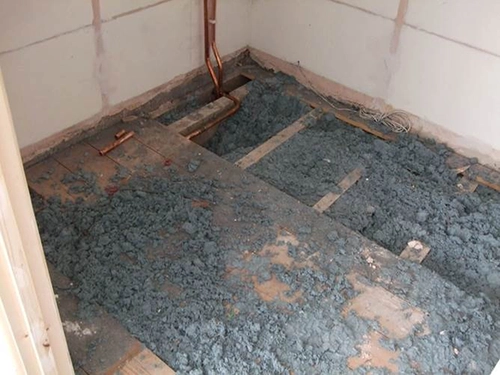
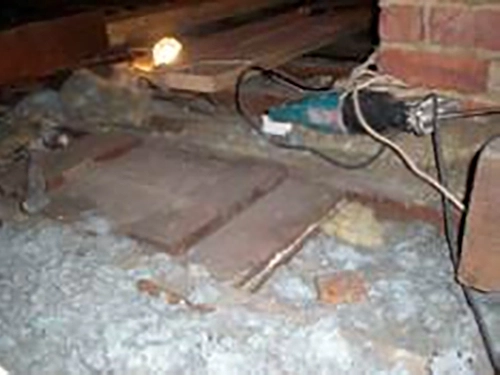
Asbestos sprayed coatings
Found on steelwork and columns to provide fire protection. Also found on the underside of roofs, ceilings and on walls for insulation and to prevent condensation and on walls for sound insulation (eg theatres). High risk of fibre release.
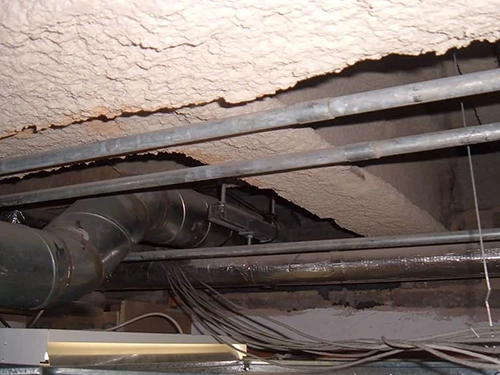

Asbestos thermal insulation
May be pre-formed or hand applied. Could be wrapped, painted or sealed with a hard plaster (often containing asbestos). Also clad with metal or painted with bitumen for protection. Other materials were also used for insulation such as blankets, tapes, ropes and corrugated paper. High risk of fibre release.
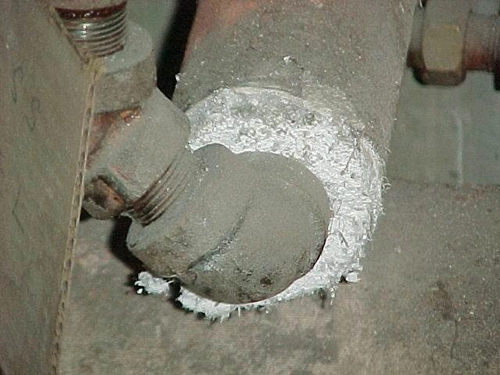
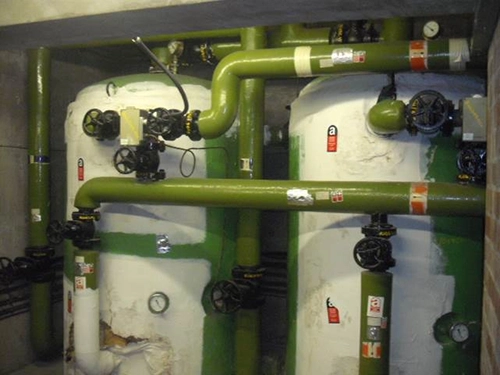
Asbestos insulating board (AIB)
Often used in premises for internal partition walls and linings and for fire protection (eg. fire breaks, fire doors), acoustic and thermal insulation and ceiling tiles. Areas around lift shafts, stairwells and service risers in multi-storey buildings were commonly lined or faced with AIB. High risk of fibre release.
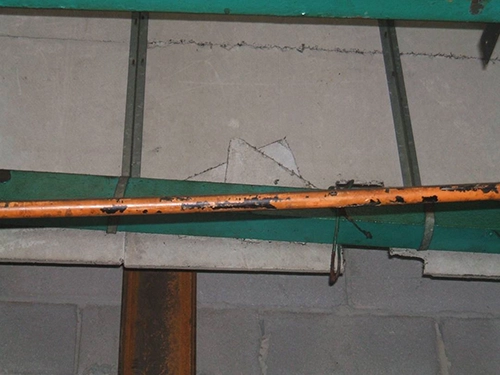
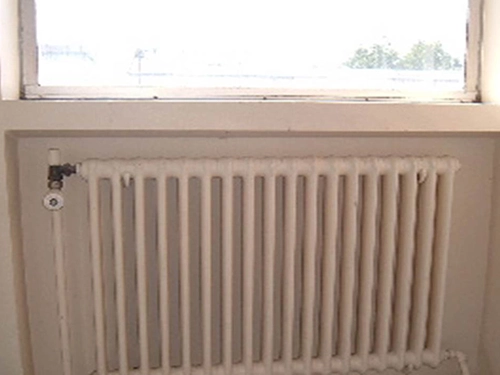
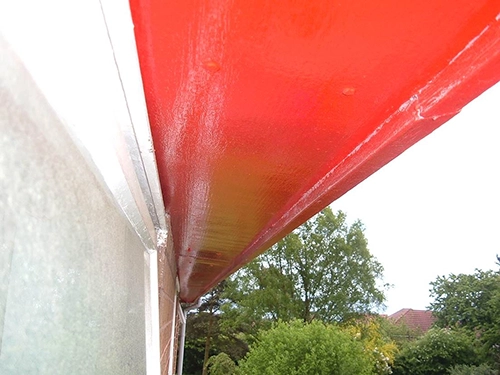

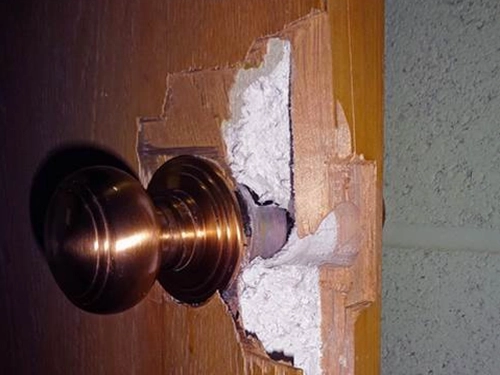
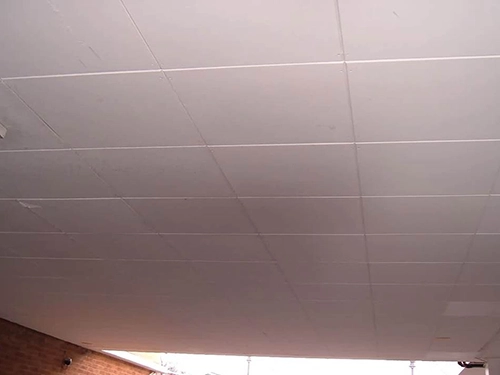
Asbestos cement products
Asbestos cement is a material which is predominantly a mixture of cement and chrysotile and which, when in a dry state, absorbs less than 30% water by weight. 40% of UK imported asbestos was used in asbestos cement.
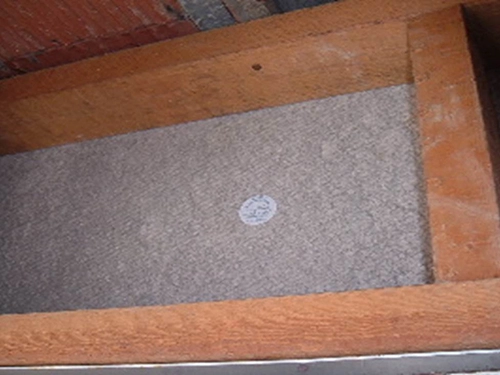

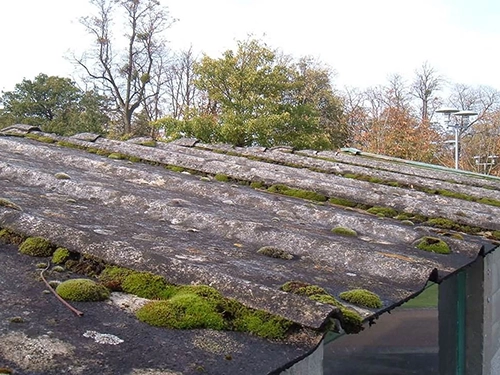
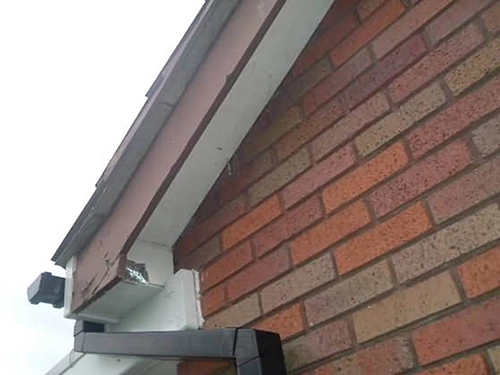
Asbestos textured coatings
These were used to produce decorative finishes on ceilings and walls. In the past, they have had various trade names such as ‘Artex’. You do not need a licence to work on these materials, but work with any type of asbestos should only be considered following a suitable risk assessment and adequate asbestos training.
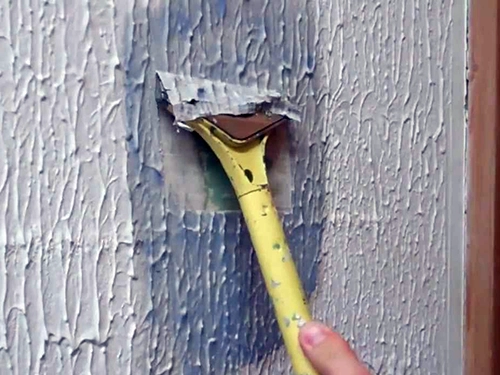
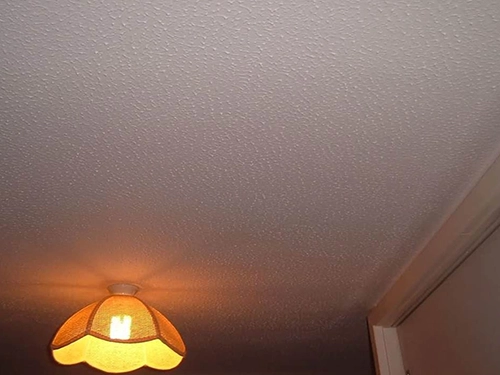
Asbestos paper, felt and card
General heat insulation and fire protection. Electrical/heat insulation of electrical equipment and plant. Asbestos paper has been used in the manufacture of roofing felt and damp-proof courses.
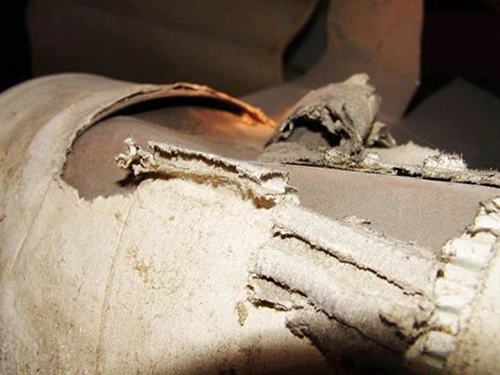
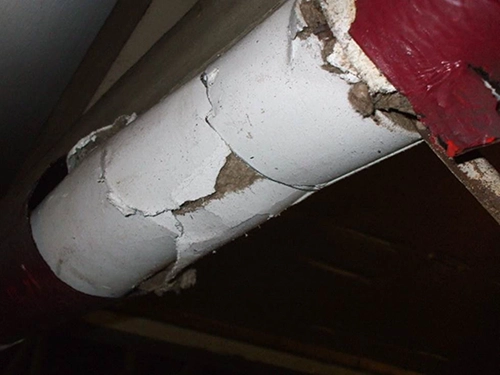
Asbestos reinforced plastics
Well bonded with a high asbestos content. Trade names include Bakelite.
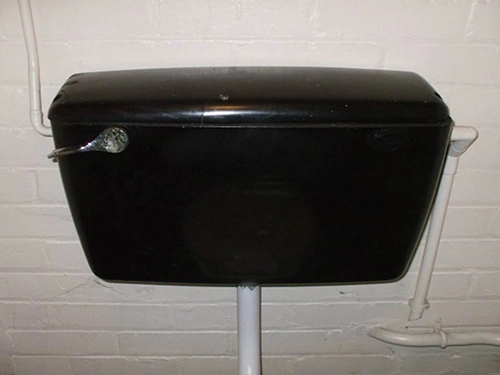

Thermoplastic floor tiles
Floor tiles that contain asbestos can also have asbestos paper backing, or be fixed with asbestos containing mastic.
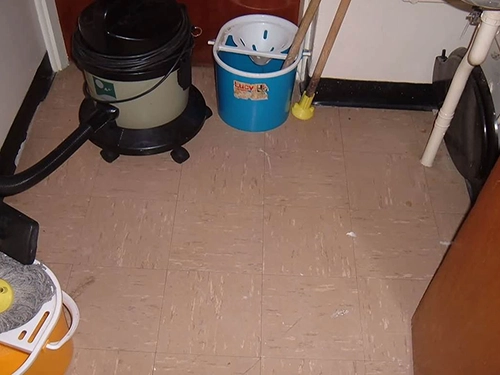

Compressed asbestos fibre gasket

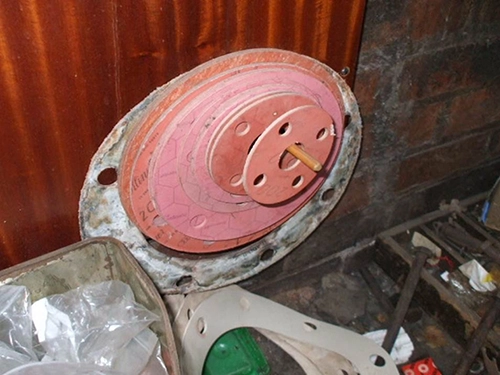
Asbestos ARC shield/chutes
Found in electrical switchgear.


Asbestos bitumen products
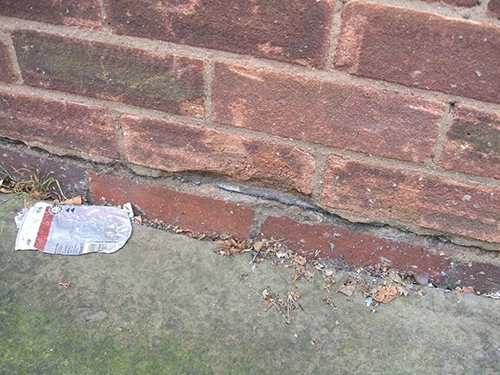
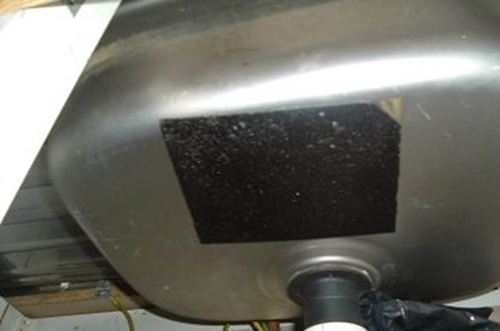
Where can you find asbestos?
Did you know that asbestos can be found in any industrial or residential building built or refurbished before the year 2000?
Asbestos was used in many of the common types of building materials up to the year 2000.
Workers including tradespeople, construction and building workers, maintenance staff and building surveyors etc will come across asbestos containing materials during their day to day work.
Industrial and Commercial Property
Asbestos can be found in any industrial or commercial building built or refurbished before the year 2000. It is in many of the common materials used in the building trade that you may come across during your work.
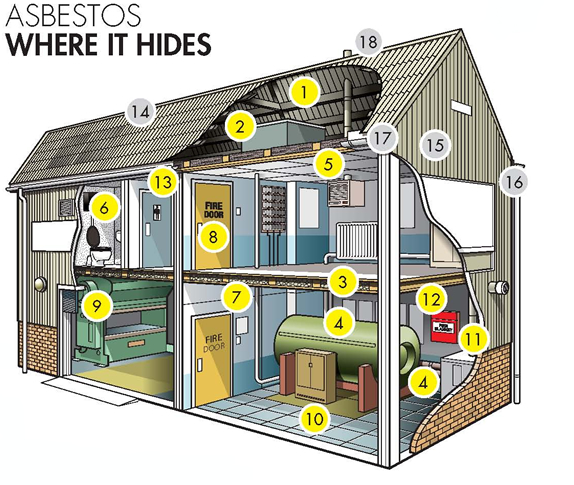
Inside
- Sprayed coatings on ceilings, walls, beams and columns
- Asbestos cement water tank
- Loose fill insulation
- Lagging on boilers and pipes
- AIB ceiling tiles
- Toilet seat and cistern
- AIB partition walls
- AIB panels in fire doors
- Asbestos rope seals, gaskets and paper
- Vinyl floor tiles
- AIB around boilers
- Textiles eg fire blankets
- Textured decorating coatings on walls and ceilings eg artex
Outside
- Asbestos cement roof
- Asbestos cement panels
- Asbestos cement gutters and downpipes
- Soffits – AIB or asbestos cement
- Asbestos cement flue
(AIB = Asbestos Insulating Board)
Residential and Domestic Property
Asbestos can be found in any residential or domestic building built or refurbished before the year 2000. It is in many of the common materials used in the building trade that you may come across during your work.
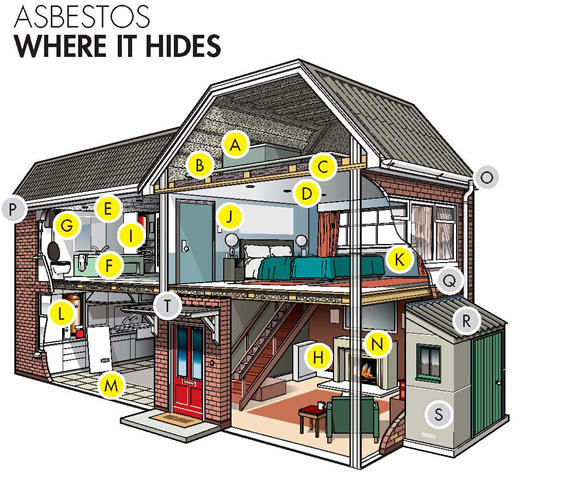
- Asbestos cement water tank
- Pipe lagging
- Loose fill insulation
- Textured decorative coating eg artex
- AIB ceiling tiles
- AIB bath panel
- Toilet seat and cistern
- AIB behind fuse box
- AIB airing cupboard and/or sprayed insulation coating boiler
- AIB partition wall
- AIB interior window panel
- AIB around boiler
- Vinyl floor tiles
- AIB behind fire
- Gutters and Asbestos cement downpipes
- Soffits – AIB or asbestos cement
- AIB exterior window panel
- Asbestos cement roof
- Asbestos cement panels
- Roofing felt
(AIB = Asbestos Insulating Board)
What can we do to help?
Regulation 4 “Duty to Manage” requires the duty holder to find out whether your property contain asbestos, assess the risk, and develop a plan to manage that risk and act on it. This can only be achieved by undertaking an asbestos survey.
Failure to comply could result in prosecution by the Health and Safety Executive (HSE).
Our asbestos survey services will identify and provide clients with recommendations for the suitable management of any Asbestos containing materials.
Why do we need an asbestos survey?
The main reason you need an Asbestos Survey is to protect any person, especially workmen, from accidentally exposing themselves and others to asbestos fibres.
If your building was constructed or altered prior to 2000, your building may contain one or more of some 3000 products manufactured that contain asbestos and therefore you will need a survey.
Within the Control of Asbestos Regulations (CAR) 2012 it clearly creates a “Duty to manage asbestos” and to manage asbestos you need to know you have got it. The asbestos survey identifies asbestos and assists the duty holder in the compilation of the management plan.
If you allow persons to disturb asbestos in your property unknowingly you are breaking the law as well as putting the health of those persons and your employees at risk. There are many documented instances of builders, plumbers and electricians drilling through innocuous panels, or cutting into pipe insulation, only to discover later that a potentially lethal mistake has been made.
The ‘Duty to Manage’ (Regulation 4) in the Control of Asbestos Regulations (CAR) 2012, is specifically designed to tighten up the law to reduce the risk from asbestos materials present in buildings.
The reason why this is done is to help prevent the loss of lives through lack of knowledge on the whereabouts and condition of asbestos-containing materials.
There are two main types of survey
The first and most common is the asbestos management survey. This is carried out to identify asbestos, carry out a material risk assessment for each positive occurrence, complete a priority assessment if required and produce an asbestos register in an easy to read format thus helping the duty holder to fulfil their duties.
The second type is the pre-demolition survey which is done in order to identify any asbestos containing materials so that they may be removed prior to the building being demolished.
There is a variation of the pre-demolition survey and this is called a refurbishment survey. As the name suggests this is done to a building or specific area of a building prior to any works being undertaken. This is so that any effected asbestos can be removed.
How much will an asbestos survey cost?
That depends on the size and age of your building.
We may be able to quote you over the phone or by email if you have sufficient information (i.e. building plans or measurements).
Alternatively we can arrange for a free site visit to provide you with a competitive Asbestos Survey quotation.
What shall I do about an asbestos management plan?
The Government introduced the Control of Asbestos Regulations (CAR) 2012 (which superseded CAR2006) in direct response to the mortality rates associated with asbestos exposure, which are currently estimated at around 4000 deaths per year.
The Health and Safety Executive (HSE) hopes to reduce future exposure by ensuring compliance with Regulation 4 (Duty to Manage Asbestos) of CAR2012, whereby the Dutyholder has the responsibility of ensuring the safe management of ACMs within their premises.
The duty is not limited to an asbestos survey, but specific to safely managing asbestos by the implementation of a vigorous management process.
In summary, the Regulation requires that you monitor the condition (i.e. conduct a reinspection) of all ACMs identified within your premises and create an asbestos management plan to outline how you intend to minimise the risks associated with asbestos exposure on your site.
To ensure compliance with Regulation 4, we strongly advise that annual reinspections of the ACMs identified in your survey and if you have not already done so, create an asbestos management plan in line with the Approved Code of Practice L127 – The management of asbestos in non-domestic premises.
Bradley Environmental have many years’ experience undertaking both reinspections and asbestos management plans for a wide range of clients and we would be happy to assist with this aspect of your regulatory compliance.
HSE inspectors are currently seeking evidence of compliance with Regulation 4 when conducting site audits. For more detailed guidance on how to effectively comply with this legislation, please refer to HSE Document A comprehensive guide to managing asbestos in premises (HSG227).



